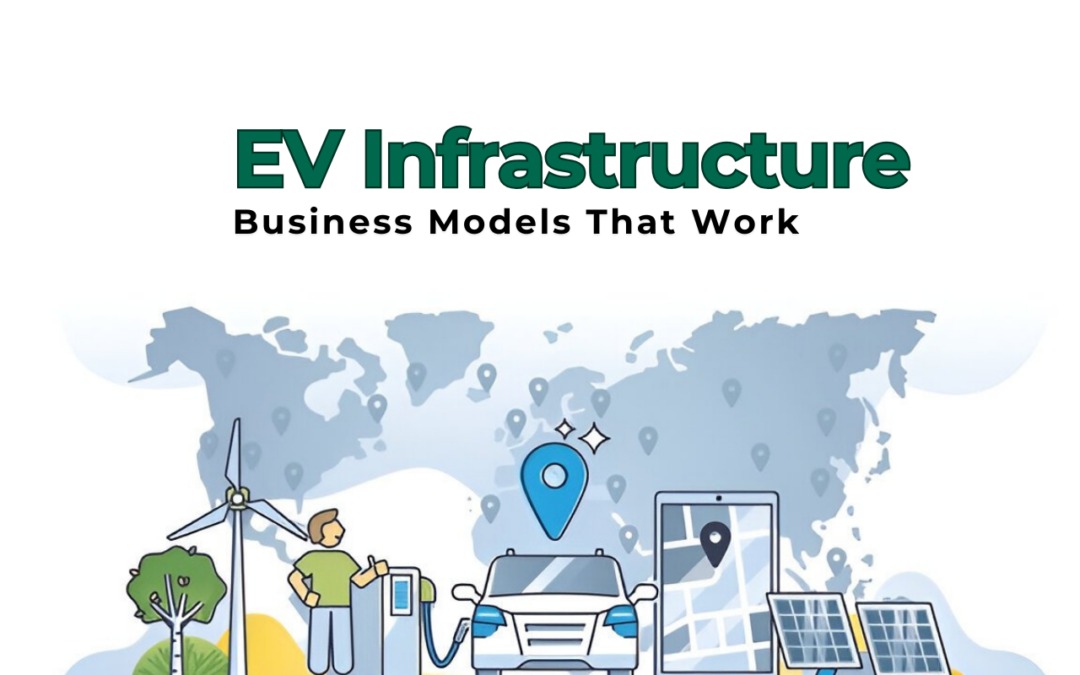As the world transitions towards sustainable energy solutions, electric vehicles (EVs) are becoming increasingly popular. However, underdeveloped areas often face challenges in adopting EV technology due to inadequate infrastructure. Despite these challenges, innovative business models can effectively monetize EV infrastructure in these regions. Here are some strategies that work:
The Growing EV Market: A Global Perspective
The global electric vehicle market was valued at approximately $250 billion in 2022 and is expected to reach $1.3 trillion by 2030, growing at a CAGR of 23.1%. Despite this rapid expansion, underdeveloped areas still lag in EV adoption due to high initial costs, lack of infrastructure, and unreliable power grids. However, with strategic planning, businesses can create profitable models tailored to these regions.
1. Public-Private Partnerships (PPPs)
Public-Private Partnerships can play a crucial role in developing EV infrastructure. By collaborating with government bodies, private companies can secure funding, reduce operational risks, and gain access to public land for charging stations. This model encourages shared investment and responsibility, making it viable even in areas with limited resources.
For instance, India’s Faster Adoption and Manufacturing of Hybrid and Electric Vehicles (FAME) II scheme has allocated $1.4 billion for EV infrastructure development, which private players can leverage.
2. Franchise-Based Charging Networks
Franchising EV charging stations allows local entrepreneurs to invest in and manage charging facilities. This decentralized approach not only reduces the financial burden on a single entity but also fosters local job creation and community involvement. Franchise owners can generate revenue through charging fees, membership subscriptions, and partnerships with local businesses.
Countries like China and the U.S. are leading in EV charging franchises, with companies such as ChargePoint and Tesla Supercharger Networks expanding rapidly. In 2022, the U.S. had over 140,000 public charging ports, and the number is expected to double by 2027.
3. Mobile Charging Solutions
In regions with unreliable power grids, mobile EV charging units can be a game-changer. Businesses can invest in mobile charging trucks or portable units powered by renewable energy sources. These units can serve multiple locations, catering to both urban and rural areas. Monetization comes through per-charge fees, subscription models, and emergency charging services.
For example, SparkCharge, a U.S.-based startup, has developed mobile EV chargers, allowing users to request on-demand charging. This model has the potential to expand into underdeveloped regions where infrastructure is lacking.
4. Integrated Energy Hubs
Creating integrated energy hubs that combine EV charging with other renewable energy solutions can enhance profitability. For example, solar-powered stations can reduce electricity costs and provide additional revenue streams by selling excess energy back to the grid. These hubs can also offer value-added services like vehicle maintenance, cafes, and retail outlets.
A case study from Kenya shows that microgrid-powered EV charging stations in rural areas have successfully provided clean energy solutions while boosting local businesses.
5. Ad-Supported Charging Stations
Leveraging advertising as a revenue stream can make EV infrastructure more financially sustainable. Charging stations located in high-traffic areas can display digital ads, turning idle charging time into an opportunity for targeted marketing. This model reduces the cost burden on EV users while generating consistent income for infrastructure operators.
Data from EVgo, one of the largest fast-charging networks in the U.S., suggests that ad-supported stations can generate 10-15% more revenue than non-advertising models.
6. Battery Swapping Stations
Battery swapping eliminates the need for long charging times, making it an attractive option in underdeveloped areas. Businesses can charge users for battery swaps, offer subscription plans, and partner with fleet operators to ensure a steady demand. This model requires significant initial investment but promises quick turnaround times and high customer satisfaction.
China’s NIO Power Swap stations have completed over 20 million battery swaps as of 2023, demonstrating the effectiveness of this model.
7. Government Incentive Utilization
Tapping into government incentives for clean energy projects can significantly boost profitability. Businesses can benefit from tax credits, grants, and subsidies designed to promote EV adoption. By aligning business models with government policies, companies can reduce costs and enhance revenue potential.
For example, the U.S. Inflation Reduction Act of 2022 provides $7.5 billion for EV infrastructure, making it an attractive market for investors.
Conclusion
Monetizing EV infrastructure in underdeveloped areas requires innovative thinking and adaptable business models. By leveraging partnerships, embracing decentralized solutions, and integrating additional revenue streams, businesses can create sustainable and profitable EV infrastructure even in challenging environments. With the EV market projected to reach 233 million units by 2030, these business models will be crucial in bridging the gap between technology and accessibility.











